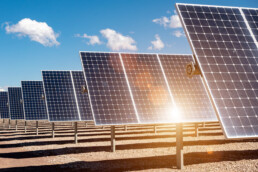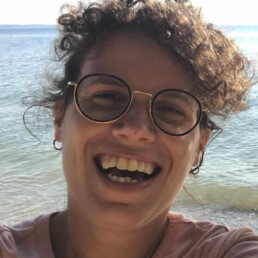A magnifying glass to elucidate their rise in photovoltaics: atomistic simulations of organic halide perovskites
Date: June 20, 2023 - at 11.00 AM (Italian time)Where: Aula P1A, Complesso Paolotti, Via Giambattista Belzoni 7, 35131, Padova
Organic inorganic hybrid halide perovskites (PSCs) have emerged as promising class of materials for solar cells. Thanks to their remarkable optical properties such as high absorption coefficient, tunable bandgap, high charge carrier mobility and low exciton binding energy, PSCs facilitate high power conversion efficiencies (PCE). Indeed, the PCEs of PSCs have rapidly risen since 2009 from 3.8% to a certified 26.2% in 2022. Most of these rapid advances are due to changes in the preparation conditions, however the connection to the underlying processes at the atomic level is basically missing. Computer simulation can in principle elucidate the atomistic mechanisms behind these phenomena, but the systems involved are highly complex involving multiple species and high activation barriers. Our approach entails the development and application of theoretical and multiscale computational modeling spanning the electronic and atomistic length scales. Classical molecular dynamics (MD) is embedded with ab-initio MD and density functional theory simulations to have an outright description of the physics behind the mechanisms responsible for long-term stability and improvement of the optical properties for PSCs.

conference speakers

Virginia Carnevali
Virginia Carnevali is a scientist in Ursula Röthlisberger’s group at the Institute of Chemical Sciences and Engineering Ecole Polytechnique Federale de Lausanne EPFL, Switzerland. She has research experience in the theory and simulations of structural, electronic, magnetic, optical, transport, and thermal properties of 2D materials, topological materials, thermoelectric materials, and solar cells. Virginia has also developed an interest in researching useful applications of quantum computing to solved condensed matter problems. Her research has focused on understanding the physics and crucial mechanisms that make a material attractive for renewable energy applications. She recently demonstrated – for the first time –that coupling of rotating lone pairs and the vibrational motion is an effective mechanism to achieve ultralow thermal conductivity in crystalline materials. Virginia is currently studying perovskite-based solar cells, one of the most promising photovoltaic solutions because of their efficient solar-power conversion, low cost and simple manufacturing process. Her efforts are aimed at improving the optical performance of this class of materials by seeking effective techniques for defect passivation, phase stabilization, and improved of charge carrier transport at the interfaces.
